
2 The Seelbach Hotel is a historic luxury hotel located in the heart of downtown Louisville, Kentucky. The hotel was first opened in 1905 by Bavarian brothers Otto and Louis Seelbach, who had immigrated to the United States in the late 1800s. Over the years, the Seelbach became known as one of the most elegant and prestigious hotels in the country, hosting numerous notable guests including Al Capone, F. Scott Fitzgerald, and Harry Truman. The hotel is also famous for its intricate architecture, which features a blend of various styles including Beaux-Arts, Renaissance Revival, and Gothic Revival.
The Seelbach Hotel underwent a series of renovations and changes of ownership over the years, with the most significant renovation occurring in the 1980s. During this time, the hotel was restored to its original grandeur with a focus on preserving its historic architecture and features. Today, the Seelbach Hotel is a popular destination for visitors to Louisville, offering luxurious accommodations, fine dining, and a variety of amenities such as a fitness center, spa, and event spaces. The hotel also continues to be recognized for its historic significance, having been added to the National Register of Historic Places in 1975.
The Seelbach Hotel underwent a series of renovations and changes of ownership over the years, with the most significant renovation occurring in the 1980s. During this time, the hotel was restored to its original grandeur with a focus on preserving its historic architecture and features. Today, the Seelbach Hotel is a popular destination for visitors to Louisville, offering luxurious accommodations, fine dining, and a variety of amenities such as a fitness center, spa, and event spaces. The hotel also continues to be recognized for its historic significance, having been added to the National Register of Historic Places in 1975.
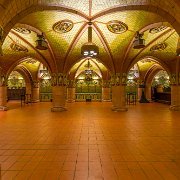
3 The Seelbach Hotel is a historic luxury hotel located in the heart of downtown Louisville, Kentucky. The hotel was first opened in 1905 by Bavarian brothers Otto and Louis Seelbach, who had immigrated to the United States in the late 1800s. Over the years, the Seelbach became known as one of the most elegant and prestigious hotels in the country, hosting numerous notable guests including Al Capone, F. Scott Fitzgerald, and Harry Truman. The hotel is also famous for its intricate architecture, which features a blend of various styles including Beaux-Arts, Renaissance Revival, and Gothic Revival.
The Seelbach Hotel underwent a series of renovations and changes of ownership over the years, with the most significant renovation occurring in the 1980s. During this time, the hotel was restored to its original grandeur with a focus on preserving its historic architecture and features. Today, the Seelbach Hotel is a popular destination for visitors to Louisville, offering luxurious accommodations, fine dining, and a variety of amenities such as a fitness center, spa, and event spaces. The hotel also continues to be recognized for its historic significance, having been added to the National Register of Historic Places in 1975.
The Seelbach Hotel underwent a series of renovations and changes of ownership over the years, with the most significant renovation occurring in the 1980s. During this time, the hotel was restored to its original grandeur with a focus on preserving its historic architecture and features. Today, the Seelbach Hotel is a popular destination for visitors to Louisville, offering luxurious accommodations, fine dining, and a variety of amenities such as a fitness center, spa, and event spaces. The hotel also continues to be recognized for its historic significance, having been added to the National Register of Historic Places in 1975.

4 The Mississippi State Capitol stands as an impressive testament to the state's rich history and architectural grandeur. Construction of the Capitol building began in 1901 and was completed in 1903. Designed by architect Theodore C. Link, the Capitol showcases a stunning Beaux-Arts architectural style, characterized by its symmetrical layout, grand dome, and intricate ornamentation. The exterior is adorned with Corinthian columns, detailed friezes, and sculptures, while the interior boasts exquisite marble and mosaic work, elegant chandeliers, and a majestic rotunda. The Capitol building is situated on a prominent hill in downtown Jackson, commanding a commanding presence and offering panoramic views of the city. It serves as the seat of the state's legislative branch and remains an iconic symbol of Mississippi's political history.
The Mississippi State Capitol has witnessed many significant historical events throughout its existence. It has been the site of important legislative decisions, political debates, and ceremonial occasions. Over the years, the building has undergone renovations and expansions to accommodate the growing needs of the state government while preserving its architectural integrity. The Capitol also serves as a repository of Mississippi's history, housing notable artifacts and artwork that showcase the state's heritage.
The Mississippi State Capitol has witnessed many significant historical events throughout its existence. It has been the site of important legislative decisions, political debates, and ceremonial occasions. Over the years, the building has undergone renovations and expansions to accommodate the growing needs of the state government while preserving its architectural integrity. The Capitol also serves as a repository of Mississippi's history, housing notable artifacts and artwork that showcase the state's heritage.
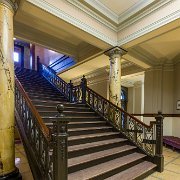
5 The Mississippi State Capitol stands as an impressive testament to the state's rich history and architectural grandeur. Construction of the Capitol building began in 1901 and was completed in 1903. Designed by architect Theodore C. Link, the Capitol showcases a stunning Beaux-Arts architectural style, characterized by its symmetrical layout, grand dome, and intricate ornamentation. The exterior is adorned with Corinthian columns, detailed friezes, and sculptures, while the interior boasts exquisite marble and mosaic work, elegant chandeliers, and a majestic rotunda. The Capitol building is situated on a prominent hill in downtown Jackson, commanding a commanding presence and offering panoramic views of the city. It serves as the seat of the state's legislative branch and remains an iconic symbol of Mississippi's political history.
The Mississippi State Capitol has witnessed many significant historical events throughout its existence. It has been the site of important legislative decisions, political debates, and ceremonial occasions. Over the years, the building has undergone renovations and expansions to accommodate the growing needs of the state government while preserving its architectural integrity. The Capitol also serves as a repository of Mississippi's history, housing notable artifacts and artwork that showcase the state's heritage.
The Mississippi State Capitol has witnessed many significant historical events throughout its existence. It has been the site of important legislative decisions, political debates, and ceremonial occasions. Over the years, the building has undergone renovations and expansions to accommodate the growing needs of the state government while preserving its architectural integrity. The Capitol also serves as a repository of Mississippi's history, housing notable artifacts and artwork that showcase the state's heritage.
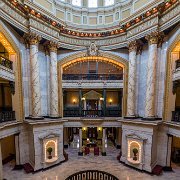
6 The Mississippi State Capitol stands as an impressive testament to the state's rich history and architectural grandeur. Construction of the Capitol building began in 1901 and was completed in 1903. Designed by architect Theodore C. Link, the Capitol showcases a stunning Beaux-Arts architectural style, characterized by its symmetrical layout, grand dome, and intricate ornamentation. The exterior is adorned with Corinthian columns, detailed friezes, and sculptures, while the interior boasts exquisite marble and mosaic work, elegant chandeliers, and a majestic rotunda. The Capitol building is situated on a prominent hill in downtown Jackson, commanding a commanding presence and offering panoramic views of the city. It serves as the seat of the state's legislative branch and remains an iconic symbol of Mississippi's political history.
The Mississippi State Capitol has witnessed many significant historical events throughout its existence. It has been the site of important legislative decisions, political debates, and ceremonial occasions. Over the years, the building has undergone renovations and expansions to accommodate the growing needs of the state government while preserving its architectural integrity. The Capitol also serves as a repository of Mississippi's history, housing notable artifacts and artwork that showcase the state's heritage.
The Mississippi State Capitol has witnessed many significant historical events throughout its existence. It has been the site of important legislative decisions, political debates, and ceremonial occasions. Over the years, the building has undergone renovations and expansions to accommodate the growing needs of the state government while preserving its architectural integrity. The Capitol also serves as a repository of Mississippi's history, housing notable artifacts and artwork that showcase the state's heritage.

7 The Mississippi State Capitol stands as an impressive testament to the state's rich history and architectural grandeur. Construction of the Capitol building began in 1901 and was completed in 1903. Designed by architect Theodore C. Link, the Capitol showcases a stunning Beaux-Arts architectural style, characterized by its symmetrical layout, grand dome, and intricate ornamentation. The exterior is adorned with Corinthian columns, detailed friezes, and sculptures, while the interior boasts exquisite marble and mosaic work, elegant chandeliers, and a majestic rotunda. The Capitol building is situated on a prominent hill in downtown Jackson, commanding a commanding presence and offering panoramic views of the city. It serves as the seat of the state's legislative branch and remains an iconic symbol of Mississippi's political history.
The Mississippi State Capitol has witnessed many significant historical events throughout its existence. It has been the site of important legislative decisions, political debates, and ceremonial occasions. Over the years, the building has undergone renovations and expansions to accommodate the growing needs of the state government while preserving its architectural integrity. The Capitol also serves as a repository of Mississippi's history, housing notable artifacts and artwork that showcase the state's heritage.
The Mississippi State Capitol has witnessed many significant historical events throughout its existence. It has been the site of important legislative decisions, political debates, and ceremonial occasions. Over the years, the building has undergone renovations and expansions to accommodate the growing needs of the state government while preserving its architectural integrity. The Capitol also serves as a repository of Mississippi's history, housing notable artifacts and artwork that showcase the state's heritage.

8 The Mississippi State Capitol stands as an impressive testament to the state's rich history and architectural grandeur. Construction of the Capitol building began in 1901 and was completed in 1903. Designed by architect Theodore C. Link, the Capitol showcases a stunning Beaux-Arts architectural style, characterized by its symmetrical layout, grand dome, and intricate ornamentation. The exterior is adorned with Corinthian columns, detailed friezes, and sculptures, while the interior boasts exquisite marble and mosaic work, elegant chandeliers, and a majestic rotunda. The Capitol building is situated on a prominent hill in downtown Jackson, commanding a commanding presence and offering panoramic views of the city. It serves as the seat of the state's legislative branch and remains an iconic symbol of Mississippi's political history.
The Mississippi State Capitol has witnessed many significant historical events throughout its existence. It has been the site of important legislative decisions, political debates, and ceremonial occasions. Over the years, the building has undergone renovations and expansions to accommodate the growing needs of the state government while preserving its architectural integrity. The Capitol also serves as a repository of Mississippi's history, housing notable artifacts and artwork that showcase the state's heritage.
The Mississippi State Capitol has witnessed many significant historical events throughout its existence. It has been the site of important legislative decisions, political debates, and ceremonial occasions. Over the years, the building has undergone renovations and expansions to accommodate the growing needs of the state government while preserving its architectural integrity. The Capitol also serves as a repository of Mississippi's history, housing notable artifacts and artwork that showcase the state's heritage.
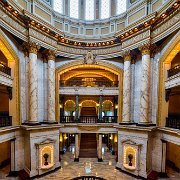
9 The Mississippi State Capitol stands as an impressive testament to the state's rich history and architectural grandeur. Construction of the Capitol building began in 1901 and was completed in 1903. Designed by architect Theodore C. Link, the Capitol showcases a stunning Beaux-Arts architectural style, characterized by its symmetrical layout, grand dome, and intricate ornamentation. The exterior is adorned with Corinthian columns, detailed friezes, and sculptures, while the interior boasts exquisite marble and mosaic work, elegant chandeliers, and a majestic rotunda. The Capitol building is situated on a prominent hill in downtown Jackson, commanding a commanding presence and offering panoramic views of the city. It serves as the seat of the state's legislative branch and remains an iconic symbol of Mississippi's political history.
The Mississippi State Capitol has witnessed many significant historical events throughout its existence. It has been the site of important legislative decisions, political debates, and ceremonial occasions. Over the years, the building has undergone renovations and expansions to accommodate the growing needs of the state government while preserving its architectural integrity. The Capitol also serves as a repository of Mississippi's history, housing notable artifacts and artwork that showcase the state's heritage.
The Mississippi State Capitol has witnessed many significant historical events throughout its existence. It has been the site of important legislative decisions, political debates, and ceremonial occasions. Over the years, the building has undergone renovations and expansions to accommodate the growing needs of the state government while preserving its architectural integrity. The Capitol also serves as a repository of Mississippi's history, housing notable artifacts and artwork that showcase the state's heritage.

10 The Mississippi State Capitol stands as an impressive testament to the state's rich history and architectural grandeur. Construction of the Capitol building began in 1901 and was completed in 1903. Designed by architect Theodore C. Link, the Capitol showcases a stunning Beaux-Arts architectural style, characterized by its symmetrical layout, grand dome, and intricate ornamentation. The exterior is adorned with Corinthian columns, detailed friezes, and sculptures, while the interior boasts exquisite marble and mosaic work, elegant chandeliers, and a majestic rotunda. The Capitol building is situated on a prominent hill in downtown Jackson, commanding a commanding presence and offering panoramic views of the city. It serves as the seat of the state's legislative branch and remains an iconic symbol of Mississippi's political history.
The Mississippi State Capitol has witnessed many significant historical events throughout its existence. It has been the site of important legislative decisions, political debates, and ceremonial occasions. Over the years, the building has undergone renovations and expansions to accommodate the growing needs of the state government while preserving its architectural integrity. The Capitol also serves as a repository of Mississippi's history, housing notable artifacts and artwork that showcase the state's heritage.
The Mississippi State Capitol has witnessed many significant historical events throughout its existence. It has been the site of important legislative decisions, political debates, and ceremonial occasions. Over the years, the building has undergone renovations and expansions to accommodate the growing needs of the state government while preserving its architectural integrity. The Capitol also serves as a repository of Mississippi's history, housing notable artifacts and artwork that showcase the state's heritage.
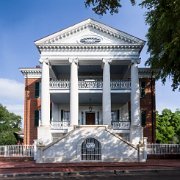
11 Choctaw Hall, an architectural gem nestled in Natchez, Mississippi, holds a storied past and an enduring presence that captivates all who encounter it. This Greek Revival-style mansion, built in the mid-19th century, stands as a testament to the grandeur and opulence of the antebellum era. Originally constructed for the esteemed Miller family, Choctaw Hall boasts intricate detailing, including stately columns, ornate cornices, and expansive verandas that exude Southern charm and elegance. Throughout its history, the mansion has served as a private residence, a Civil War hospital, and, eventually, a cherished historic landmark. Today, Choctaw Hall continues to enchant visitors with its preserved period furnishings, breathtaking architecture, and a glimpse into the refined lifestyle of the antebellum South.
Beyond its architectural beauty, Choctaw Hall also embodies the history and cultural heritage of Natchez. As one of the city's most prominent landmarks, it offers a window into the complexities of the region's past, from its association with the plantation economy to the impact of the Civil War. The mansion's richly decorated interior spaces, including its grand parlors, ballroom, and elegant bedrooms, invite visitors to step back in time and experience the refined lifestyle of the era. Choctaw Hall serves as a reminder of the historical legacy and architectural splendor that define Natchez, making it a must-visit destination for history enthusiasts and admirers of Southern heritage.
Beyond its architectural beauty, Choctaw Hall also embodies the history and cultural heritage of Natchez. As one of the city's most prominent landmarks, it offers a window into the complexities of the region's past, from its association with the plantation economy to the impact of the Civil War. The mansion's richly decorated interior spaces, including its grand parlors, ballroom, and elegant bedrooms, invite visitors to step back in time and experience the refined lifestyle of the era. Choctaw Hall serves as a reminder of the historical legacy and architectural splendor that define Natchez, making it a must-visit destination for history enthusiasts and admirers of Southern heritage.

12 Cherokee, Natchez – (c. 1836). Cherokee is an excellent example of using the landscape to enhance a house’s position, as it is situated on top of a large hill and retaining wall, which places it on par with the larger Choctaw (which is located across the street). Cherokee possesses an interesting inset porch with Tuscan columns, a Federal style fanlight-type window in the prominent dormer, and a detailed Greek Revival entrance doorway. The Mississippi Heritage Trust awarded the Whatley family a Merit award in 2000 for their restoration of Cherokee’s 1830s-era faux stone stucco. Many houses in Natchez had stucco applied, painted, and scored to resemble cut stone during the 1830s. Cherokee is the only one of these Natchez houses to have its stucco restored, a costly and time consuming process.
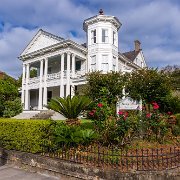
13 The Bailey House in Natchez, Mississippi, is a remarkable architectural gem that carries a fascinating history within its walls. Constructed in 1828, this Federal-style mansion showcases the elegance and refinement of the antebellum era. The architectural details of the Bailey House, including its symmetrical façade, tall windows with delicate tracery, and a welcoming portico supported by stately columns, exude a sense of classical beauty. The interior of the house features ornate plasterwork, graceful archways, and exquisite woodwork, reflecting the craftsmanship of the time. Throughout its history, the Bailey House has been home to influential families and has witnessed the unfolding of Natchez's rich cultural and social landscape.
The history of the Bailey House is intertwined with the storied past of Natchez. It has been associated with several notable figures and events, providing a glimpse into the city's historical fabric. The mansion has welcomed esteemed visitors, including President Andrew Jackson, and has been the site of grand social gatherings that played a role in shaping Natchez's society. As one of the few surviving antebellum mansions in Natchez, the Bailey House serves as a living testament to the city's rich heritage. Its architectural beauty and historical significance make it a cherished landmark, allowing visitors to step back in time and immerse themselves in the allure of Natchez's past.
The history of the Bailey House is intertwined with the storied past of Natchez. It has been associated with several notable figures and events, providing a glimpse into the city's historical fabric. The mansion has welcomed esteemed visitors, including President Andrew Jackson, and has been the site of grand social gatherings that played a role in shaping Natchez's society. As one of the few surviving antebellum mansions in Natchez, the Bailey House serves as a living testament to the city's rich heritage. Its architectural beauty and historical significance make it a cherished landmark, allowing visitors to step back in time and immerse themselves in the allure of Natchez's past.

14 The Bailey House in Natchez, Mississippi, is a remarkable architectural gem that carries a fascinating history within its walls. Constructed in 1828, this Federal-style mansion showcases the elegance and refinement of the antebellum era. The architectural details of the Bailey House, including its symmetrical façade, tall windows with delicate tracery, and a welcoming portico supported by stately columns, exude a sense of classical beauty. The interior of the house features ornate plasterwork, graceful archways, and exquisite woodwork, reflecting the craftsmanship of the time. Throughout its history, the Bailey House has been home to influential families and has witnessed the unfolding of Natchez's rich cultural and social landscape.
The history of the Bailey House is intertwined with the storied past of Natchez. It has been associated with several notable figures and events, providing a glimpse into the city's historical fabric. The mansion has welcomed esteemed visitors, including President Andrew Jackson, and has been the site of grand social gatherings that played a role in shaping Natchez's society. As one of the few surviving antebellum mansions in Natchez, the Bailey House serves as a living testament to the city's rich heritage. Its architectural beauty and historical significance make it a cherished landmark, allowing visitors to step back in time and immerse themselves in the allure of Natchez's past.
The history of the Bailey House is intertwined with the storied past of Natchez. It has been associated with several notable figures and events, providing a glimpse into the city's historical fabric. The mansion has welcomed esteemed visitors, including President Andrew Jackson, and has been the site of grand social gatherings that played a role in shaping Natchez's society. As one of the few surviving antebellum mansions in Natchez, the Bailey House serves as a living testament to the city's rich heritage. Its architectural beauty and historical significance make it a cherished landmark, allowing visitors to step back in time and immerse themselves in the allure of Natchez's past.
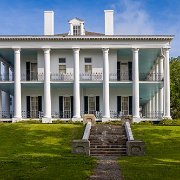
15 Dunleith Inn, nestled in Natchez, Mississippi, holds a rich history and architectural allure that transports visitors to a bygone era. Originally constructed in 1856 as a Greek Revival-style mansion, Dunleith Inn stands as a testament to the antebellum grandeur of the South. Its commanding presence and meticulously preserved features, such as stately columns, ornate wrought-iron detailing, and expansive verandas, exemplify the timeless elegance of Southern architecture. Over the years, this historic landmark has served as a private residence, a Union Army headquarters during the Civil War, and, eventually, a luxurious inn. With its harmonious blend of history and architectural splendor, Dunleith Inn offers guests an enchanting retreat into the captivating past of Natchez.
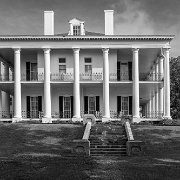
16 Dunleith Inn, nestled in Natchez, Mississippi, holds a rich history and architectural allure that transports visitors to a bygone era. Originally constructed in 1856 as a Greek Revival-style mansion, Dunleith Inn stands as a testament to the antebellum grandeur of the South. Its commanding presence and meticulously preserved features, such as stately columns, ornate wrought-iron detailing, and expansive verandas, exemplify the timeless elegance of Southern architecture. Over the years, this historic landmark has served as a private residence, a Union Army headquarters during the Civil War, and, eventually, a luxurious inn. With its harmonious blend of history and architectural splendor, Dunleith Inn offers guests an enchanting retreat into the captivating past of Natchez.

17 Dunleith Inn, nestled in Natchez, Mississippi, holds a rich history and architectural allure that transports visitors to a bygone era. Originally constructed in 1856 as a Greek Revival-style mansion, Dunleith Inn stands as a testament to the antebellum grandeur of the South. Its commanding presence and meticulously preserved features, such as stately columns, ornate wrought-iron detailing, and expansive verandas, exemplify the timeless elegance of Southern architecture. Over the years, this historic landmark has served as a private residence, a Union Army headquarters during the Civil War, and, eventually, a luxurious inn. With its harmonious blend of history and architectural splendor, Dunleith Inn offers guests an enchanting retreat into the captivating past of Natchez.
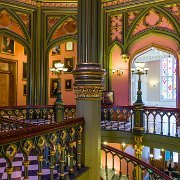
18 The Old State Capitol in Baton Rouge, Louisiana is an iconic example of Gothic Revival architecture. The building was constructed in the mid-19th century and served as the state capitol from 1852 to 1932. The Old State Capitol is notable for its striking appearance, with its towering spires, pointed arches, and ornate decorations. The building is also significant for its role in Louisiana history, serving as the site of many important political events, including the passage of the Louisiana secession ordinance in 1861. Today, the Old State Capitol is a museum that showcases the history of Louisiana politics and government, as well as the unique architectural heritage of the building itself.
One of the most famous features of the Old State Capitol is its stained-glass dome, which rises 75 feet above the rotunda. The dome is made up of more than 600 panels of stained glass and is illuminated by natural light during the day and artificial light at night. The interior of the building also features impressive woodwork and plasterwork, as well as murals that depict scenes from Louisiana history. The Old State Capitol is an important landmark in Baton Rouge and a popular destination for visitors to Louisiana who are interested in history, politics, and architecture.
One of the most famous features of the Old State Capitol is its stained-glass dome, which rises 75 feet above the rotunda. The dome is made up of more than 600 panels of stained glass and is illuminated by natural light during the day and artificial light at night. The interior of the building also features impressive woodwork and plasterwork, as well as murals that depict scenes from Louisiana history. The Old State Capitol is an important landmark in Baton Rouge and a popular destination for visitors to Louisiana who are interested in history, politics, and architecture.

19 The Old State Capitol in Baton Rouge, Louisiana is an iconic example of Gothic Revival architecture. The building was constructed in the mid-19th century and served as the state capitol from 1852 to 1932. The Old State Capitol is notable for its striking appearance, with its towering spires, pointed arches, and ornate decorations. The building is also significant for its role in Louisiana history, serving as the site of many important political events, including the passage of the Louisiana secession ordinance in 1861. Today, the Old State Capitol is a museum that showcases the history of Louisiana politics and government, as well as the unique architectural heritage of the building itself.
One of the most famous features of the Old State Capitol is its stained-glass dome, which rises 75 feet above the rotunda. The dome is made up of more than 600 panels of stained glass and is illuminated by natural light during the day and artificial light at night. The interior of the building also features impressive woodwork and plasterwork, as well as murals that depict scenes from Louisiana history. The Old State Capitol is an important landmark in Baton Rouge and a popular destination for visitors to Louisiana who are interested in history, politics, and architecture.
One of the most famous features of the Old State Capitol is its stained-glass dome, which rises 75 feet above the rotunda. The dome is made up of more than 600 panels of stained glass and is illuminated by natural light during the day and artificial light at night. The interior of the building also features impressive woodwork and plasterwork, as well as murals that depict scenes from Louisiana history. The Old State Capitol is an important landmark in Baton Rouge and a popular destination for visitors to Louisiana who are interested in history, politics, and architecture.

20 The Old State Capitol in Baton Rouge, Louisiana is an iconic example of Gothic Revival architecture. The building was constructed in the mid-19th century and served as the state capitol from 1852 to 1932. The Old State Capitol is notable for its striking appearance, with its towering spires, pointed arches, and ornate decorations. The building is also significant for its role in Louisiana history, serving as the site of many important political events, including the passage of the Louisiana secession ordinance in 1861. Today, the Old State Capitol is a museum that showcases the history of Louisiana politics and government, as well as the unique architectural heritage of the building itself.
One of the most famous features of the Old State Capitol is its stained-glass dome, which rises 75 feet above the rotunda. The dome is made up of more than 600 panels of stained glass and is illuminated by natural light during the day and artificial light at night. The interior of the building also features impressive woodwork and plasterwork, as well as murals that depict scenes from Louisiana history. The Old State Capitol is an important landmark in Baton Rouge and a popular destination for visitors to Louisiana who are interested in history, politics, and architecture.
One of the most famous features of the Old State Capitol is its stained-glass dome, which rises 75 feet above the rotunda. The dome is made up of more than 600 panels of stained glass and is illuminated by natural light during the day and artificial light at night. The interior of the building also features impressive woodwork and plasterwork, as well as murals that depict scenes from Louisiana history. The Old State Capitol is an important landmark in Baton Rouge and a popular destination for visitors to Louisiana who are interested in history, politics, and architecture.

Columns